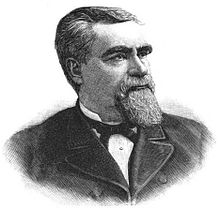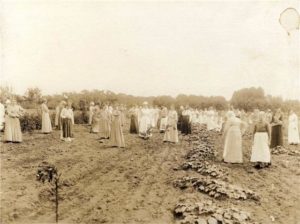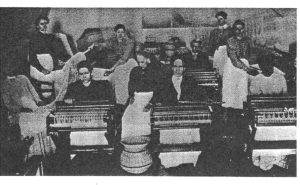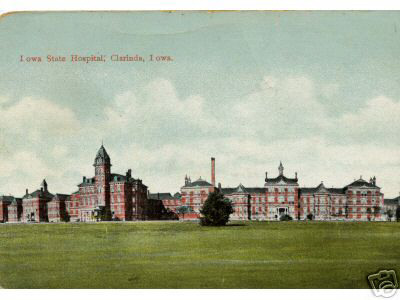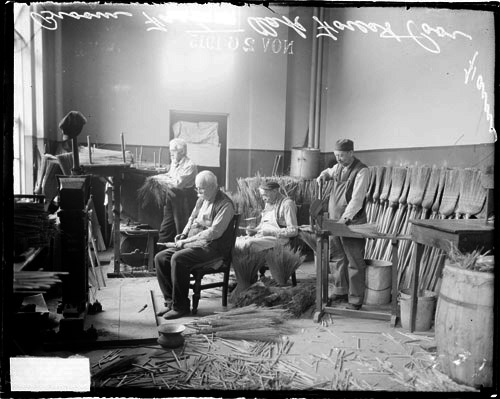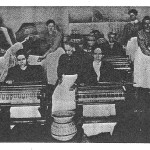Physicians used hydrotherapy (various sorts of baths and showers) extensively in the treatment of the insane. The treatments could sometimes be helpful; a nice, warm bath might relax a patient or help him sleep, or a bracing shower could stimulate a patient who felt sluggish and tired. Dr. Charles Pilgrim, however, took water treatments to an extreme with what he called “Tub Therapy.”
Dr. Pilgrim arrived at the Hudson River State Hospital from the Willard Asylum in1893. He quickly made physical improvements to the institution, installing electric lights to replace the gas lamps, and building new 50-bed cottages for patients, a new mortuary, and a lab. In 1908, Pilgrim introduced Tub Therapy, a form of the continuous bath. Patients entered the tub room and reclined on a canvas hammock in a tub of warm water, a rubber pillow behind their necks for additional comfort. Water temperature was monitored so that it remained at the proper therapeutic level.
Most patients would have enjoyed this for an hour or two, but Pilgrim’s treatment was of much longer duration. A September 17, 1908 article in The Beaver Herald (Oklahoma) stated: “You sleep for six hours . . . next morning breakfast is served to you in the tub, then dinner, then supper.” Occasionally the doctor would come in to chat or take a blood sample, and the patient grew calmer, more rested, and more cheerful all the while. After at least several days (the title of the article was “Live for Weeks in the Bathtub”), the patient finally got out of the tub with the help of a nurse and found him or herself well again.
This treatment was primarily for patients who felt madness coming on, either just fearing a breakdown or actually close to one in their own or others’ opinion. The therapy was voluntary, though it is hard to see anyone in good physical health actually enjoying the forced inactivity.





